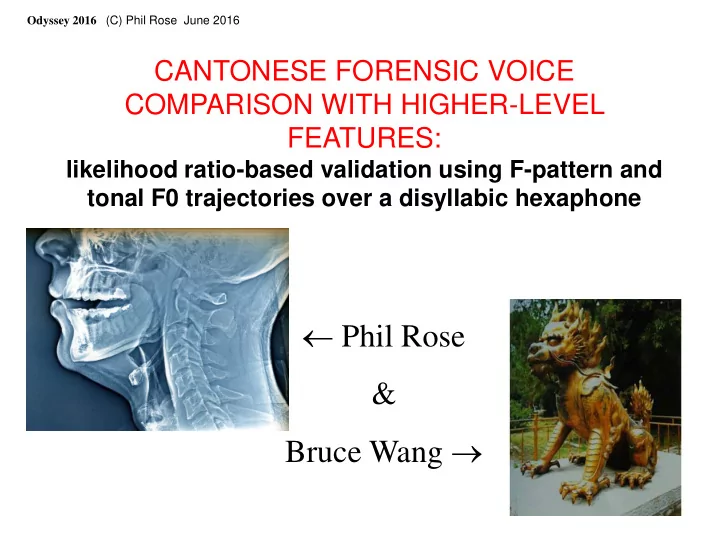

Odyssey 2016 (C) Phil Rose June 2016 CANTONESE FORENSIC VOICE COMPARISON WITH HIGHER-LEVEL FEATURES: likelihood ratio-based validation using F-pattern and tonal F0 trajectories over a disyllabic hexaphone ← Phil Rose & Bruce Wang →
• When experts do real-world forensic voice comparison case-work they need to know what is the best approach to use under the circumstances of the case. • There is no more compelling reason for forensic voice comparison research than this.
• You often get recurrent polysyllabic words ( alright, not too bad, hello, ok ) in suspect and offender speech samples. • We usually model the F-pattern trajectory of these on separate syllables ( o - k, not – too – bad ). • I wanted to find out whether you get better strength of evidence ( aka LR) if you model the (usually more complex) trajectory of the word acoustics as a whole – superphthong. • Tested with higher-level features (F-pattern and tonal F0) in the Cantonese word 第一 daihyat L.H first using LR validation.
• I know there is nothing I can tell anyone here about automatic speaker recognition … • But I hope there might be a few aspects of the simpler higher-level world you find interesting. • More importantly, though, I DO have some things to say about Likelihood Ratios in Forensic Voice Comparison based on my real-world case experience. • And (more importantly still) I want to learn from you. • So please drop by.
Recommend
More recommend